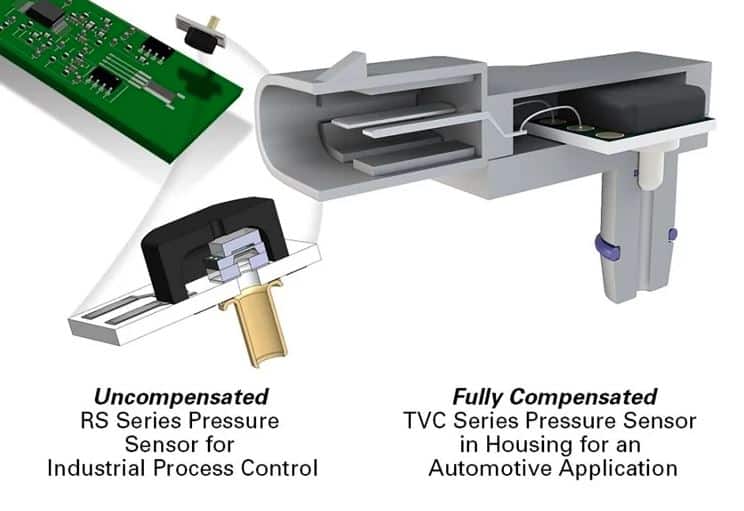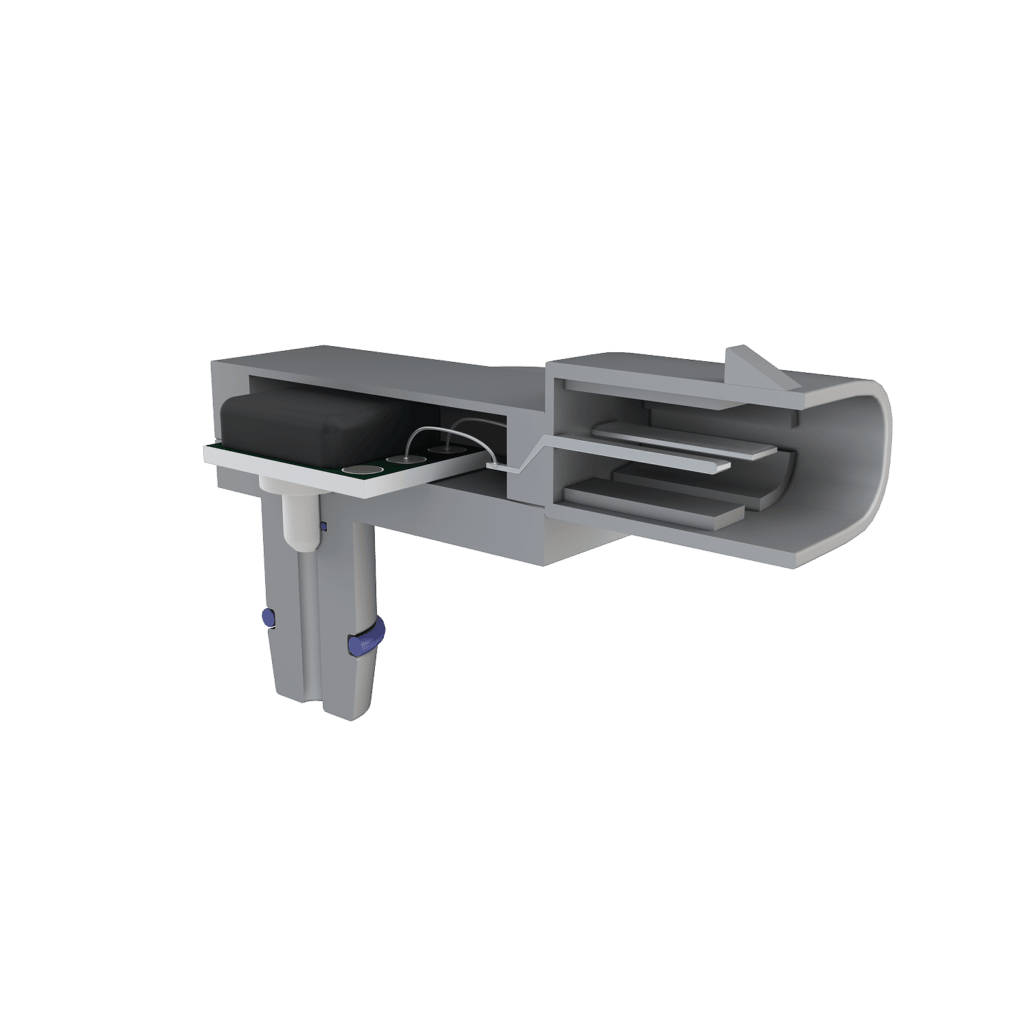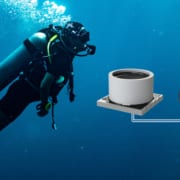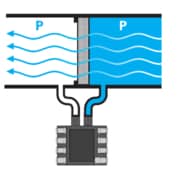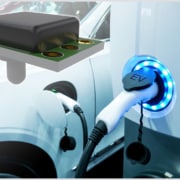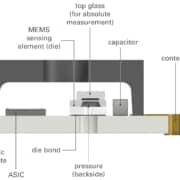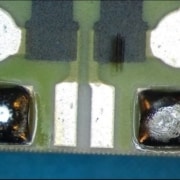Compensated and Uncompensated Pressure Sensors
Take a look at Merit Sensor’s product portfolio, and you will see that the pressure sensors are available fully compensated, passively compensated, and uncompensated. Let’s briefly review the differences.
When signal conditioning is used to compensate for a sensor’s non-ideal output, the sensor is considered fully compensated. When laser-trimming technology is used to change a sensor’s resistor properties and performance, the sensor is considered passively compensated. And when a sensor comprises nothing more than a MEMS die bonded on a ceramic substrate and wire bonded to the metal traces on the ceramic but has no signal conditioning and no laser-trimmed resistors, the sensor is uncompensated.
The application in which a pressure sensor is used often determines whether the customer needs the sensor to be fully compensated, passively compensated, or uncompensated. For example, in monitoring blood pressure, a pressure sensor is exposed to only a narrow temperature range around room temperature. A passively compensated pressure sensor is accurate enough for the application. In monitoring pressure in the fuel rail of an automobile, however, the pressure sensor needs to be able to function accurately and consistently in much wider temperature ranges. It is also only one of many different parts assembled in volumes too large to do compensation in line. A fully compensated pressure sensor is ideal for this application. But to measure variable air volume in a building, a customer could purchase a pressure sensor uncompensated because the pressure sensor would likely be integrated into the control board, where the compensation could be done.
There is also the issue of packaging the pressure sensor, i.e. integrating it into a housing. If a customer’s packaging process introduces significant stress to the sensor, a compensated sensor would register a new zero point, and the compensation would be flawed. In this case the customer should consider purchasing an uncompensated sensor and then compensating it, or having it done by a specialist, once the sensor has been completely integrated into the final module.
Pressure-sensor compensation is challenging and costly, though. It requires specialized equipment and expertise. Perhaps most important, it is time consuming. Each sensor needs to be calibrated individually, and the equipment takes a long time to reach the required temperatures for calibration.
At Merit Sensor we are calibration experts. We know that some of our customers are too, while others are not. That’s why we have pressure sensors available uncompensated, passively compensated, and fully compensated to suit the needs of various customers.
For more information, visit this article on AZOSensors.com

